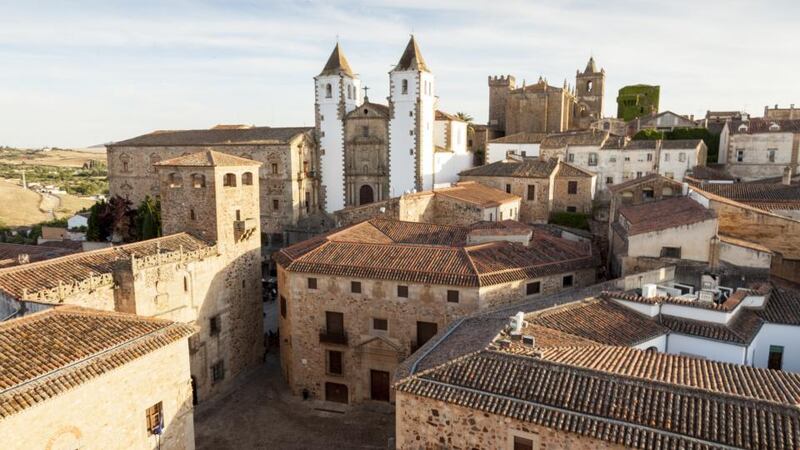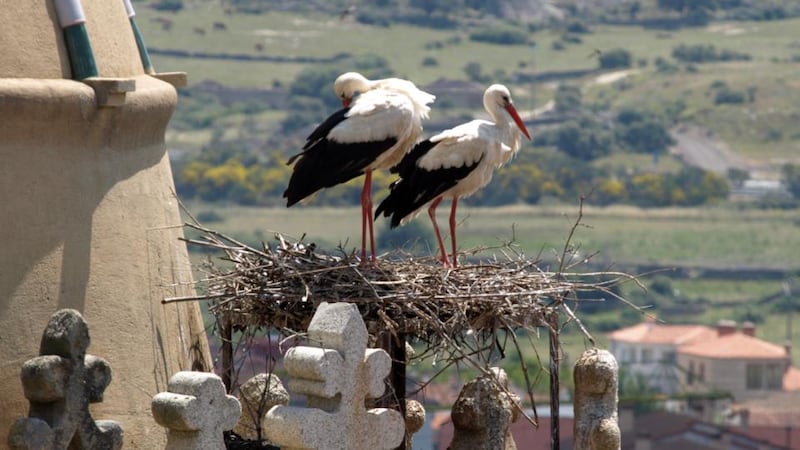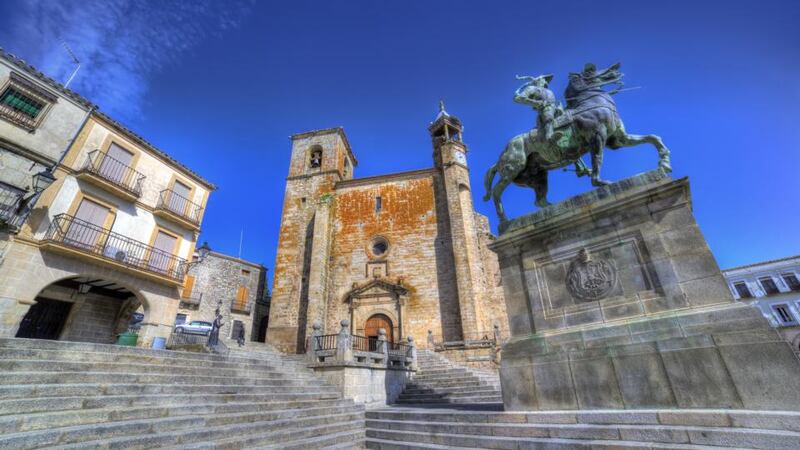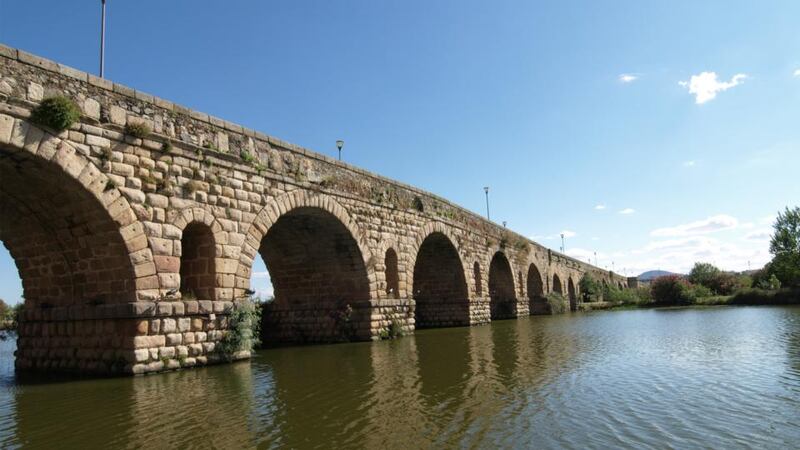The Spanish love a fiesta, and nowhere more so than in the mountains of Extremadura, where they don't do things by halves. In the town of Villanueva de la Vera, west of Madrid, people allow themselves to be tied to crosses each Maundy Thursday. Then, wearing crowns of thorns, they drag themselves around the streets. These penitents are referred to as los Empalaos, or the Impaled. Clanking chains strapped to the crosses presumably remind onlookers of their own fate should they choose to sin.
There are countless fiestas across Spain each year – and timing is everything. Arriving in a medieval city when a festival is taking place is definitely the way to go. The city of Cáceres, in southern Extremadura, was founded by the Romans but had its heyday in the Middle Ages, first under the Moors and subsequently under the Christian nobles who built enormous mansions within the walled city. As the local stone is a lovely creamy granite, all the buildings give off a soft, mellow, instantly welcoming tone.

To walk around the city at night, when its turrets and battlements are lit up, its streets are thronged with merrymakers, and its street traders are dressed in Middle Ages costumes, is a truly fun experience. Piglets roasting on barbecues in the Christian quarter; lamb sizzling on spits in the Arab quarter; stalls heaving with dried fruit; belly dancers waggling their way through the narrow streets to the accompaniment of drums and reedy flutes; owls, eagles and hawks sitting on perches, looking haughtily at the gawping crowds who want a photo with them; hot chestnuts and toffee apples: all of this and more forms the medieval experience in Cáceres.
In this part of Spain it’s best to base yourself in a city and make sorties to the many national parks. Extremadura’s contrasts – its vast plains and mountain ranges, its sun-baked earth and huge rivers – make it an ideal place for hiking, kayaking, horseriding and birdwatching. In fact, its wild landscapes attract many species of bird that have disappeared elsewhere. One is the black vulture – whose presence, circling overhead, does not inspire confidence when you’re climbing high above the plains, surrounded by granite boulders, in danger of breaking an ankle or toppling into a rocky defile at any moment.


Talking of birds, you can’t go anywhere in Extremadura without seeing storks’ nests. Every tower and steeple, every chimney and gargoyle, seems to be topped with one of these untidy assemblages of twigs. The birds start to return from autumn feeding around the middle of December, and their strange clacking fills town squares.
A deep-blue sky and a warming sun, but no energy-sapping heat, are the perfect ingredients for a holiday in which you want to do more than just lie outside. This is the type of weather to wander around ancient towns and villages, places built by Romans, Visigoths, Moors and Christians.

Trujillo, not too far from Cáceres, has an air of tranquillity, a sense of history, of things being as they always were. On Plaza Mayor children are playing hopscotch after school. Have they been told that the spot on which they are playing was paid for by the conquistador Francisco Pizarro, returning home from the New World laden with stolen gold?
As well as paying for the plaza, the now-rich members of the Pizarro and Orellana families built mansions in the town, decorating them with their coats of arms and generally putting it about that they were a force to be reckoned with.
Transhumance – moving animals from the parched plains up into the mountains in the summer and back down in winter – was once common in Extremadura. The paths the farmers used are now ideal tracks for walkers and horseriders. The dry cold of winter and spring in this part of Spain is perfect for this type of activity.
Although Irish visitors might love the dryness of the air, a lack of water is becoming ever more of a problem. The winter rains have not come to parts of central Spain for several years. Farmers are being forced to dig wells and invest in sprinkler systems. Huge rivers like the Guadiana and the Guadarrama, as well as many smaller rivers, are well below their normal levels, posing huge problems for farmers growing traditional crops such as tobacco, grains, grapes, cherries and olives.
Imagine almost 1,000km of perfectly cut stone, not to mention bridges large enough to march an army across, with all the attendant paraphernalia of war and commerce
They might therefore be keen to make some money from walkers or cyclists. The Ruta de La Plata, or Silver Route, was a road the Romans built to join Seville, in the south, with Cantabria, in the north. Imagine almost 1,000km of perfectly cut stone, not to mention bridges large enough to march an army across, with all the attendant paraphernalia of war and commerce. Over the centuries the route was used by all and sundry to get from north to south, and the towns along the way benefited greatly.

Nowadays you come upon only sections of the original stone, of course, but the route, now a waymarked path, closely follows some of the older roads. According to John Hayes it makes for a perfect cycling trip, both in terms of the historical cities you visit along the way and the quality of the surface on which you are cycling.
If you are burning through calories and happen to be a carnivore, Spain is the place to replenish them. Extremadura is a meat lover's paradise where the pig is king. The famous jamón ibérico de bellota comes from these parts, and it is the acorns the black pigs consume in vast quantities that give their meat its flavour. Legs of the stuff hang all over the place, and in every restaurant it's piggy fare for all.
It is at breakfast, however, that the vegetarian gets her own back. Picture a giant loaf of soft but crusty bread, smeared with fresh local olive oil and smashed-up tomatoes: heaven. When a really good coffee costs only €1.20 and the whole meal is less than €5, you can’t go wrong.










